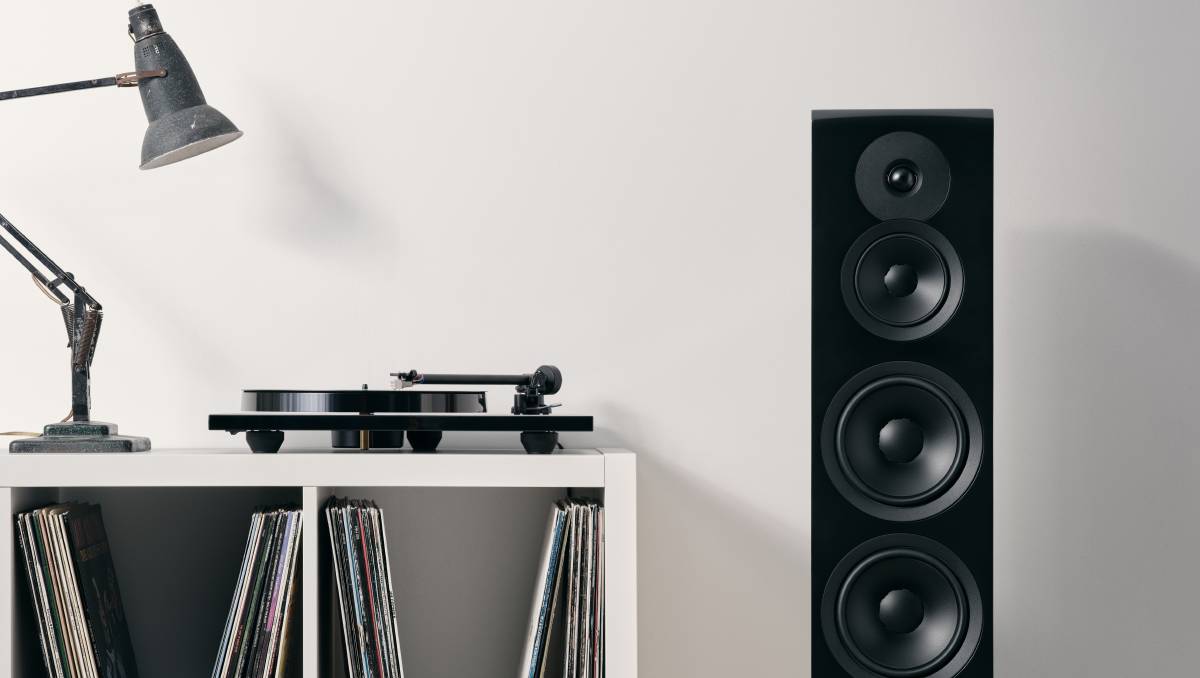
Music is arguably one of the most important things in life – it’s a mood setter, a connector and an entertainer. Bringing exceptional sounding music into the home becomes a key focus for any host or homemaker.
Whether you’re looking for a completely new sound system or simply upgrading your current set-up, choosing the right speakers for your particular situation can be overwhelming with so many brands, categories and price points on the market.
Stephen Dawson, hi-fi expert at Addicted to Audio, says there are many ways speakers can be categorised – two-way or three-way, floor standing or stand-mount, and so on.
According to Stephen, one way that’s relatively uncommon in the hi-fi area is passive versus active speakers. That’s because almost all speakers used in hi-fi have traditionally been passive. In professional audio, by contrast, studio monitors are very frequently active.
Here’s Stephen’s expert advice.
Passive versus active – what’s the difference?
The main difference: active speakers have an amplifier/s built in, whereas passive speakers don’t. Although things are never quite that simple. There are some models which are a bit of both – only adding to the confusion.
It’s worth noting I’m referring to traditional two-channel stereo speakers here – mentioning Bluetooth or other network enabled speakers could keep us here all day.
- Read more: Check out how you can save with the latest deals on interiors, homewares and DIY products with discount codes from Australian Coupons.
The pros and cons
Passive speakers need to be driven by amplifiers requiring thick speaker cables. In the home, that has long been the norm for hi-fi and home theatre sound systems. While with active speakers, all you need is the signal cable running from a pre-amplifier to each speaker.
You can expect active speakers to be more expensive because you’re also paying for the amplifier/s. But on the other hand, you save in not having to pay for separate amps.
One major advantage of passive speakers is that you get to choose which amplifier to use with which set of speakers. With active speakers, the amplifier and speaker are bundled together. Choose one and you get the other.
Because they are quite long and the levels are low, the signal cables to active speakers are more likely to pick up electrical interference than normal speaker cables used with passive speakers. There are “balanced” connections which can minimise interference in active models, however these come at an additional cost, which might be better spent on a great pair of passive speakers.
A key performance difference has to do with amplifier control over the speakers, especially the bass drivers – making the biggest impact on sound qualit
y. It’s th
e very short lengths of the wiring between drivers and amplifiers in active loudspeakers that provides this control.
It has certainly been my experience that quality active speakers typically have a level of control that goes beyond all but the very best passive systems, due to the built-in nature of the active amps.
Practical considerations
While the above covers performance- based differences, there are two practicalities that should be taken into account. The first is quite mundane, but it’s important to note you will need power points for active speakers. Passive speakers require only the audio feed.
Second, there are many more passive models available, which means a much greater choice. Active speakers occupy only a small segment of the market, so choice is limited, and you are entirely in the hands of the brand as to the quality of the built-in amplifiers.
Just remember, while it’s useful to have all this background knowledge, in the end you should judge on results.
If you are choosing between passive and active speakers, take your favourite music with you to the stores featuring them and have a thorough listen. Then, let your ears do the choosing.
